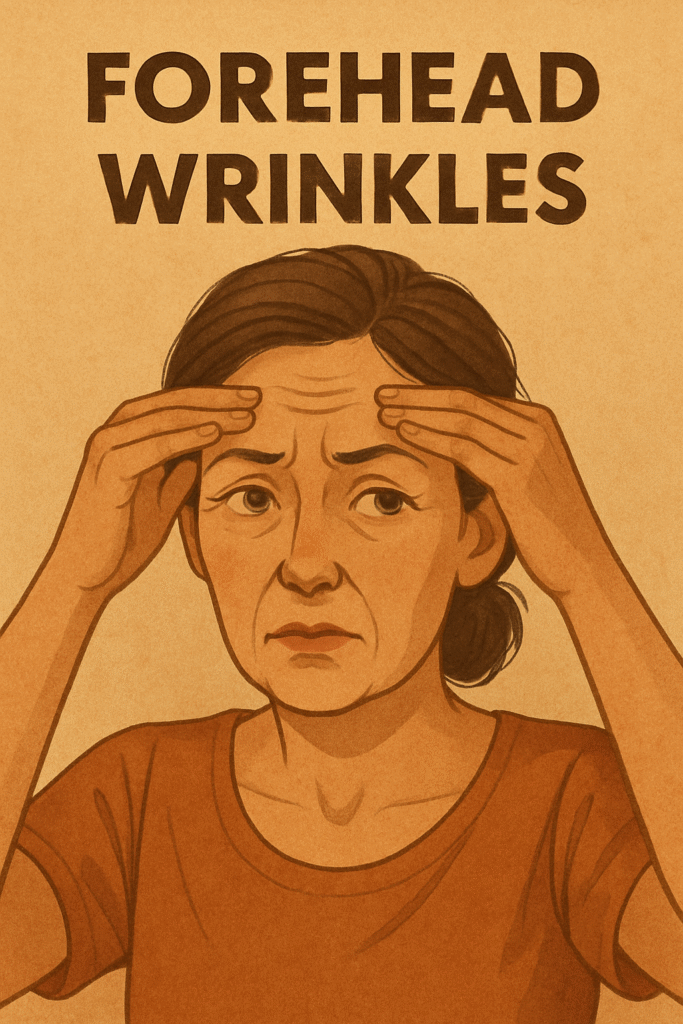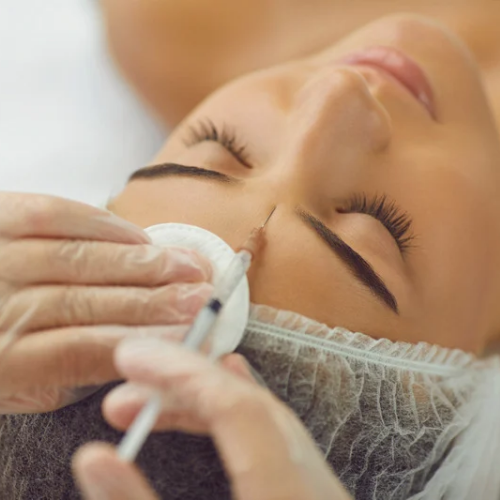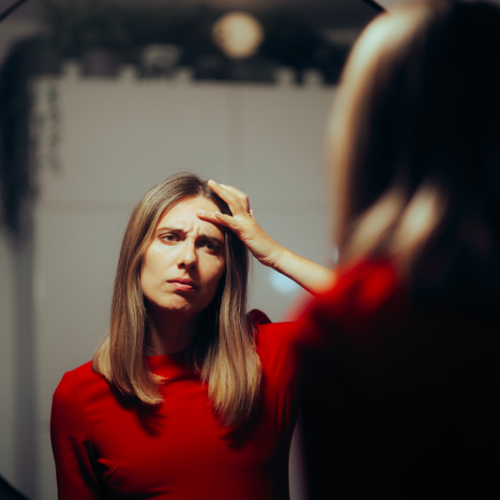Table of Contents
Our skin changes with age. Wrinkles, specifically on the forehead, are one of the most observable symptoms of aging. Forehead wrinkles can make a person appear older or anxious, so many individuals look for ways to minimize or even remove them. Whether they are caused by genetics, environmental circumstances, or the natural aging process, forehead wrinkles are a conventional problem.
If you want to get rid of these wrinkles, you are not alone. Fortunately, there are various viable cures to explore, including lifestyle changes, natural treatments, & medical procedures. In this guide, we will go over all you need to know about forehead wrinkles, their causes, & the most effective treatments available.
What’re forehead wrinkles?

Before going into the solutions, it is vital to define forehead wrinkles. Wrinkles are folds, lines, or creases on the skin that form with the age. The skin loses its elasticity & capacity to withhold moisture, causing it to droop & wrinkle. Forehead wrinkles, in specific, are the lines or creases that appear on the forehead. These might change from small lines to deep furrows.
Types of Forehead Wrinkles

1. Horizontal Lines:
These are the most conventional type of forehead wrinkles, which run horizontally across the forehead. They are typically caused by repetitive action of the forehead muscles, such as raising your brows or frowning.
2. Frown Lines (Glabellar Lines):
These are vertical lines that appear between the brows. They appear when you frown or squint, & are generally caused by facial expressions such as anger, bothering, or concentration.
3. Crow’s Feet:
Although crow’s feet are commonly linked with the eyes, they may also appear on the outer edges of the forehead. These wrinkles are formed by squinting or smiling.
Understanding the sort of wrinkles you have will help you select the best therapy. Now let’s have a look at some of the most common provoke of forehead wrinkles.
Causes forehead wrinkles?
Several alterable contribute to the formation of forehead wrinkles. These can be broadly classified as internal (genetic) & external (environmental) causes. Understanding these factors can help you take deterring steps and choose the best treatment.
1. Aging
As we age, our skin progressively loses suppleness and thins. Collagen and elastin fibers, which keep the skin lusty and youthful, start to break down. This causes wrinkles, notably forehead wrinkles. This process increase in your 40s and 50s, although it can start as early as your 30s, depending on genetics & environment.
2. Facial expressions
Repeated facial motions, such as raising your brows, frowning, or smiling, aid to produce wrinkles. These movements force the muscles beneath the skin to tense, which can eventually accelerates to wrinkles. This is especially true for forehead wrinkles, where the muscles are continually working.
3. Sun Exposure
Prolonged exposure to the sun’s damaging ultraviolet (UV) rays can injure your skin. UV radiation destroy collagen and elastin fibers, which are responsible for maintaining skin smoothness and firmness. Sun damage can support accelerated aging and wrinkles, such as those on the forehead.
4. Smoking
Smoking provides significantly to the development of wrinkles. Cigarette chemicals reduce blood flow to the skin, depriving it of oxygen and nutrients. This causes the skin to lose suppleness, resulting in the appearance of wrinkles. Smokers have a higher risk of developing forehead wrinkles than nonsmokers.
5. Dehydration
Dehydration causes the skin to become dry and less elastic, enhance the likelihood of wrinkles. Dehydration can be caused by not drinking enough water, consuming too much alcohol, or being exposed to harsh weather conditions. Dry skin continually causes the growth of fine lines and wrinkles.
6. Genetics
Your genetics have a significant impact on how promptly your skin ages and the possibility of acquiring forehead wrinkles. Some people have inherently more elastic skin, whereas others may be more prone to wrinkles due to their genetic composition.
7. Sleep position
Sleeping positions can also help to generate wrinkles, especially on the forehead. If you sleep with your face squished against a pillow or your forehead screwed up, creases will form. Over time, these creases can become everlasting, resulting in wrinkles.
8. Poor skincare habits
Using harsh skincare products, not moisturizing on a daily basis, and failing to properly cleanse your face can all contribute to skin aging. Skincare products that dehydrate or irritate the skin can cause damage and speed up the formation of wrinkles.
How to Prevent and Reduce Forehead Wrinkles
While you cannot completely reverse the affects of aging, there are numerous methods for preventing and reducing forehead wrinkles. From adopting healthier lifestyle habits to utilizing the correct skincare products, you can minimize their appearance and slow the development of new wrinkles.
1. Protect your skin from the sun
One of the most crucial stages in avoiding forehead wrinkles is to shield your skin from the sun’s harmful UV radiation. Sun protection is vital for preventing premature aging and minimizing the look of existing wrinkles.
Use broad-spectrum sunscreen with SPF 30 or higher to your face, including your forehead, before heading outside. If you spend time outdoors, reapply every two hours.
Seek Shade: Avoid direct sunlight, especially between 10 a.m. and 4 p.m., when UV rays are most intense.
Wear UV-protective apparel, such as hats and sunglasses, to help protect your skin from sun damage.
2. Lead a Healthy Lifestyle
Maintaining a healthy lifestyle can significantly enhance the appearance of your skin.
Stay moisturized: Drinking enough of water keeps your skin moisturized and plump, decreasing the appearance of fine lines and wrinkles.
Eat a Healthy Diet: Antioxidant-rich foods, like fruits and vegetables, can help protect and nourish your skin. Fish and nuts include omega-3 fatty acids, which are beneficial for maintaining skin suppleness.
Quit Smoking: Quitting smoking can help you avoid further skin damage and preserve a more youthful appearance.
3. Skin Care Routine for Forehead Wrinkles
A good skincare program can significantly minimize the appearance of forehead wrinkles.
Apply Moisturizer: Keeping your skin hydrated helps fill fine lines and prevents dryness, which can make wrinkles more visible.
Apply Retinoids: Retinoids (Vitamin A derivatives) stimulate collagen formation and skin turnover, minimizing the appearance of wrinkles over time.
Exfoliate: Regular exfoliation removes dead skin cells and promotes cell renewal. This can make the skin look smoother and lessen the appearance of wrinkles.
Use Antioxidant-Rich Products: Look for serums or creams that include antioxidants like Vitamin C and E. These can protect the skin from environmental harm & stimulate collagen formation.
4. Facial exercises
Facial workouts are supposed to tone and strengthen the muscles beneath the skin, hence reducing the appearance of forehead wrinkles.
Eyebrow Lifts: Using your fingers, gently lift your brows upward while keeping your eyes closed. Maintain this position for 10-15 seconds & repeat many times.
Forehead Smoothing: Gently push your palms down on your forehead, then rise your brows against the pressure. This exercise strengthens the muscles of the forehead.
5. Botox and fillers
If you want a more rapid and dramatic outcome, Botox and dermal fillers are popular procedures for reducing forehead wrinkles.
Botox treats wrinkles by temporarily numbing the muscles that cause them. Botox works by relaxing the muscles in your forehead, smoothing out wrinkles and preventing new ones from emerging.
Dermal Fillers: Fillers, like hyaluronic acid, can be injected into the skin to fill wrinkles and add volume. They are typically added to correct deeper lines, like frown lines and brow furrows.
6. Laser treatments
Laser treatments, such as fractional CO2 lasers or intense pulsed light (IPL), can boost collagen formation and elevate skin elasticity. These procedures resurface the skin, minimizing the appearance of fine lines and wrinkles on the forehead.
7. Micro-needling

Microneedling is a procedure that employs microscopic needles to cause micro-injuries in the skin. This technique elevates the skin’s natural healing response and promote collagen formation. Microneedling can enhance the look of fine lines and wrinkles, especially those on the forehead.
8. Chemical peels
Chemical peels exfoliate the skin by removing its outer layers and stimulating skin renewal. This therapy stimulates collagen formation and remediate the look of fine lines and wrinkles on the forehead.
Conclusion
Forehead wrinkles are a natural part of the aging process, but that doesn’t mean you have to accept them and try to reduce their appearance. There are a variety of therapies available to help you keep smooth, youthful skin, ranging from simple lifestyle adjustments to complex surgical procedures.
You may dramatically reduce the appearance of forehead wrinkles by following a good skincare routine, staying hydrated, protecting your skin from the sun, and contemplating professional treatments like Botox or dermal fillers. Remember that prevention is essential, so begin using these measures today to keep your forehead wrinkle-free for as long as possible.
With consistency, the correct treatments, & a little patience, you may say goodbye to forehead wrinkles and enjoy a more youthful appearance for many years.
